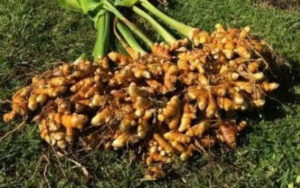UP govt to distribute 17 lakh bio-decomposers to farmers
By Shri Ram Shaw
New Delhi/Lucknow: Aiming to reduce the pollution caused by stubble burning, the Yogi government has decided to provide bio decomposers to 17 lakh farmers to convert paddy straw into bio-compost. The move is aimed at finding part of Chief Minister Yogi Adityanath’s efforts to find a permanent solution to this problem through penalties, awareness campaigns, and other possible methods.
Notably, after harvesting paddy and wheat, the main Kharif and Rabi crops, it has become a common practice to burn the residue of these crops to prepare the fields for the next crop which becomes severe due to moisture in the weather in some areas.
Planters will get concessions
As per the draft of the Uttar Pradesh State Bioenergy Policy 2022 prepared by the government, various types of incentives will be provided to agriculture residue-based bio CNG and bio-CBG (compressed bio-gas) units. The Chief Minister has already announced that such units will be set up in every district.
A plant in Gorakhpur will start soon
A plant of this kind, costing around Rs 160 crore, is being set up by Indian Oil in Dhuriapar, Dakshinanchal, Gorakhpur. It is expected to be operational by March 2023. It will utilize rice and wheat straw, rice husk, sugarcane leaves, and cow dung and each material will have a fixed rate. In this way, the stubble of the crops will also get the price.
Apart from the employment provided in the plant, large scale employment will be generated at the local level in the field of gathering, loading, unloading and transportation of raw materials for the requirement of the plant. The compost manure that will be available after the production of CNG and CBG will be made available to the farmers at cheap rates.
Meanwhile, programs to educate farmers about the negative impacts of stubble burning will continue through agricultural science centers and farmer welfare centers.
Stubble has a treasure of nutrients
Research has shown that the amount of NPK in remaining crop residues is 0.5%, 0.6%, and 1.5% respectively. Instead of burning them, if these residues are composted in the field, the soil will have access to these nutrients. This can lead to a savings of around 25 percent on fertilizers in the next crop, resulting in reduced costs and increased profits. It also helps in retaining soil’s organic matter, preserving bacteria-fungi balance, environmental conservation, and reducing the impact of global warming.
According to a study by the Gorakhpur Environmental Action Group, burning stubble not only releases nutrients, but also leads to the loss of around 400 kilograms of valuable carbon per acre, along with 10-40 crore bacteria and 1-2 lakh fungi in every gram of soil.
According to Dr. BK Singh, former zonal manager of UP Livestock Development Council, about 18 quintals of crop residue are produced from every acre of land. With the market value of crop residue to be around Rs 400 per quintal during the season, burning this residue results in the loss of Rs 7200 worth of fodder. This later becomes a cause for fodder scarcity.
Other benefits of crop residue:
– The covering of soil with crop residues keeps the temperature of the soil cool, which enhances the activity of microorganisms. These microorganisms provide essential nutrients for the next crop.
– The moisture retention capacity of soil covered with residues increases, which improves the soil’s water-holding ability. This reduces the amount of water required for irrigation and also conserves scarce water resources.
Consider these alternatives:
Instead of burning stubble, try deep ploughing it into the field and irrigating the land. Before sowing the next crop, you can apply around 5 kilograms of urea per acre to enhance its quick decomposition.

















